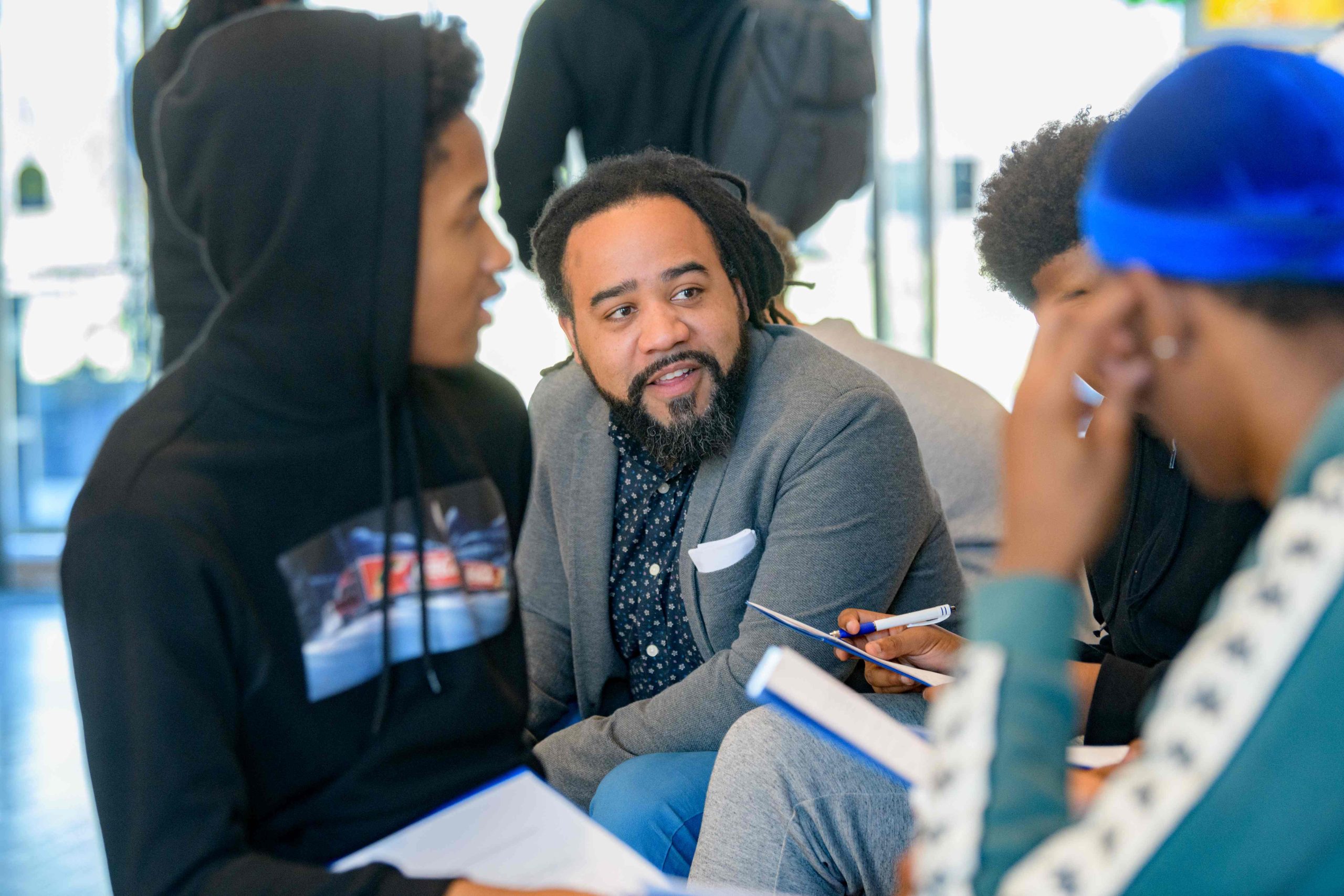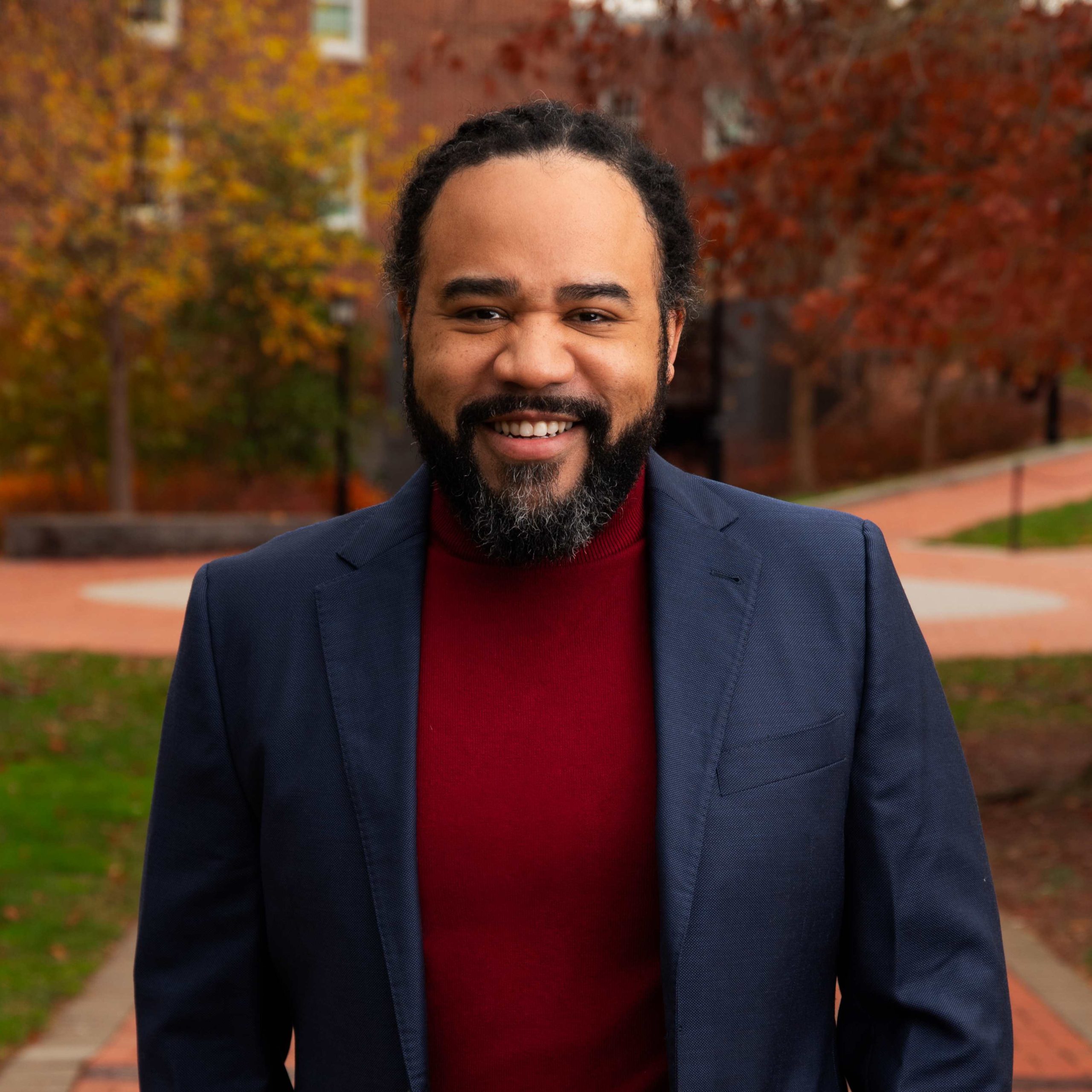Research Spotlight: Roderick L. Carey

University of Delaware professor publishes a rich case study of Black and Latinx experiences at a college preparatory school
What comes next after high school graduation? While this question can be vexing for many students, adolescents from low-income Black and Latinx communities face many barriers in imagining and actualizing life after high school. Many educators help these students persevere by adopting a “college-for-all” school culture, but few studies have looked at whether this strategy responds to these students’ broader goals and aspirations.
In a new study published in the American Educational Research Journal, Roderick L. Carey, assistant professor in UD’s College of Education and Human Development, offers a rich, ethnographic case study on how Black and Latinx boys imagine their postsecondary futures. With attention to the students’ first-person narratives about their school experiences and personal aspirations, Carey shows how their high school—a Mid-Atlantic college preparatory school in the United States—ultimately fails to understand and support their college, career and personal aspirations for life after graduation.
“College is just one facet of a broader interconnected life that adolescents need support in imagining,” said Carey, who teaches and conducts research within CEHD’s Department of Human Development and Family Sciences. “Postsecondary future selves is a concept that folds together three pieces of that broader life—college, career and life condition, or ‘the 3Cs.’ By focusing on one, and ignoring the other two, educators miss the mark.”
A “college-for-all” case study
Many studies on college preparatory schools illustrate the important role that high schools play in encouraging Black and Latinx boys to attend college. As a former high school English teacher in urban college preparatory schools, Carey witnessed firsthand some of the positive impacts of a college-going culture on his students’ lives. But, he also saw that many of his former students failed to complete even a year of college.
Carey offers an in-depth case study of three Black and two Latinx boys in 11th grade at a linguistically and ethnically diverse urban school, which he calls Metropolitan Collegiate Public Charter School (Metro). Over the course of an academic year, Carey interviewed the students about their school’s college-going culture and how it influenced their conceptions of their postsecondary future selves.
Metro employed what Carey calls a “college-over-everything-else” culture. College posters adorned the school walls year-round, students regularly attended college and recruitment fairs, teachers wore the insignia of their alma maters every week and students were required to apply to colleges.
Carey found that Metro prioritized the “what” and “how” of college access—answering “What is a college degree?” and “How do I secure one?”—but paid little attention to the “why” or how college would help a student fulfill his future ambitions. Answering the “why” question was especially important for this group of Black and Latinx boys; many of them would be the first in their families to attend and graduate from college.
For example, Malik, a Black boy with an interest in engineering, told Carey that “I think they expect too much. . . . I know some people who don’t wanna go to college. They still like shove college tours down your throat.” Though some students were interested in pursuing a trade, becoming business owners or joining the military, Metro only offered support related to college admission.
King, a Black boy with an interest in professional football, also critiqued his school for the false sense of access it promoted. King, like most of the participants in Carey’s study, had a grade point average under 3.0, and he knew that elite four-year institutions—where many division 1 football programs reside—would not be open to him. While the motivational practices of Metro’s teachers worked for some students, they actually discouraged students like King.
‘‘Why wear the T-shirt of a college that you know a kid here can’t go to?’’ King wondered. ‘‘I mean they got all them posters and the little flags and all that. But haven’t nobody went to none of them schools for real. It’s just fake.’’
Carey’s study also found that, while some students had clear career ambitions, their ability to align college majors with these careers varied. And, despite the school’s college-going culture, some students did not have a clear plan for a future career.
For example, Perdido—a Latinx boy who chose a pseudonym for this study meaning “lost” in Spanish—connected some of his intellectual interests with a college major, noting that he “might look into” philosophy because it “involves a lot of thinking . . . and a lot of writing, which expresses your thoughts.” But, he also struggled to connect this major with a future career. In conversation with Carey, he asked “but what do philosophers even do?”
Like other teens, Perdido struggled to determine what to do with a philosophy degree. But his challenge was augmented by the fact that no one in his family had pursued a college-based career, especially in the humanities. Most of the Salvadoran men in his family worked with their hands in blue-collar jobs, showing Perdido what “counted” as work.
Finally, Carey found that the participants in his study struggled to envision their lives after the age of 23, around the time when they graduate from college. The study participants generally envisioned a modest life, characterized by minimal stress, financial stability and personal satisfaction. But, students like Perdido were not able to offer many specifics. For Perdido, a “good life,” was a “steady life,” free from financial worries. Plans for civic engagement, hobbies, volunteerism and even joyous pursuits were all absent from Perdido’s vision of his future life.
Resources for educators
Given the results of his study, Carey calls upon college preparatory schools and educators more broadly to widen the scope of college-going cultures so that all students understand the links between college, career and their life after college graduation.
“Educators—not just counselors—must support adolescents on the cusp of adulthood in aligning their ambitions,” said Carey. “They need help figuring out how college fits in with a broader outlook. These supports can take many forms, and this is why we worked on a collaboration we call ‘Finding Future Selves.’”
With the support of UD’s Partnership for Public Education and CEHD’s Center for Research Use in Education, Carey has co-developed resources for educators interested in helping marginalized youth imagine their postsecondary future selves. His online resource, Finding Future Selves, provides free lesson plans, classroom activities, student testimonials and links to additional research for educators who are interested in answering this call.
“Sometimes we forget that one of the most important jobs for adolescents is determining what their future holds,” said Carey. “We focus a lot on Black and Brown youth merely surviving school and society. And schools are complicit in this. But schools need to refuse business as usual to spur the imaginations of students and help them determine what thriving looks like on their terms. Finding Future Selves is a tool to help with just that.”
Carey’s article, published in the flagship journal of the American Educational Research Association, is currently available online and will be available in print in the April 2024 issue of the American Educational Research Journal.
Read this story on UDaily.
About Roderick L. Carey
Roderick L. Carey is an assistant professor in CEHD’s Department of Human Development and Family Sciences. His interdisciplinary research focuses on the school experiences of Black and Latinx adolescent boys and young men in urban contexts, drawing upon critical theories, sociological tools and constructs from developmental psychology. Using qualitative approaches, Carey writes about both macro and micro issues related to families and schools, teacher education, professional development for equity and the ways that Black and Latinx adolescent boys and young men conceptualize their postsecondary school futures.
Equity & Diversity Faculty at CEHD
Carey’s research complements the work of faculty studying issues related to equity and diversity, including Ann Aviles, Dominique Baker, Tia Barnes, Martha Buell, Laura Desimone, Valerie Earnshaw, Laura Eisenman, Heather Farmer, Mellissa Gordon, Soo Bin Jang, Eric Layland, Erica Litke, Leigh McLean, Rosalie Rolon Dow, Bahira Sherif Trask, Elizabeth Soslau, Rosalyn Washington, Lynn Worden, Carol Wong and Brittany Zakszeski, among many others.
News mentions
Researcher finds high schools fail to understand, support aspirations of Black and Latinx boys
Phys.org, March 14, 2024
New Research Shows Black and Latinx boys Not Getting Enough Support for Post High School Aspirations
Newswise, March 14, 2024




